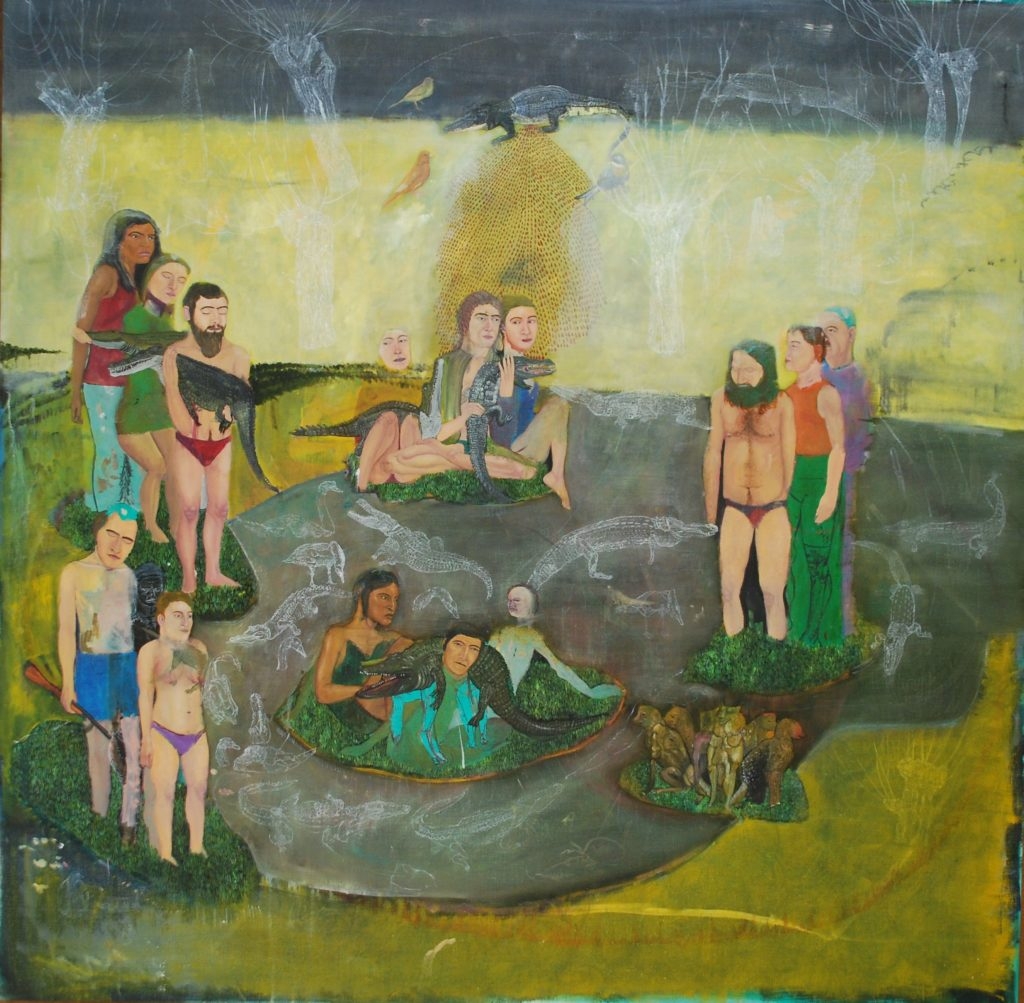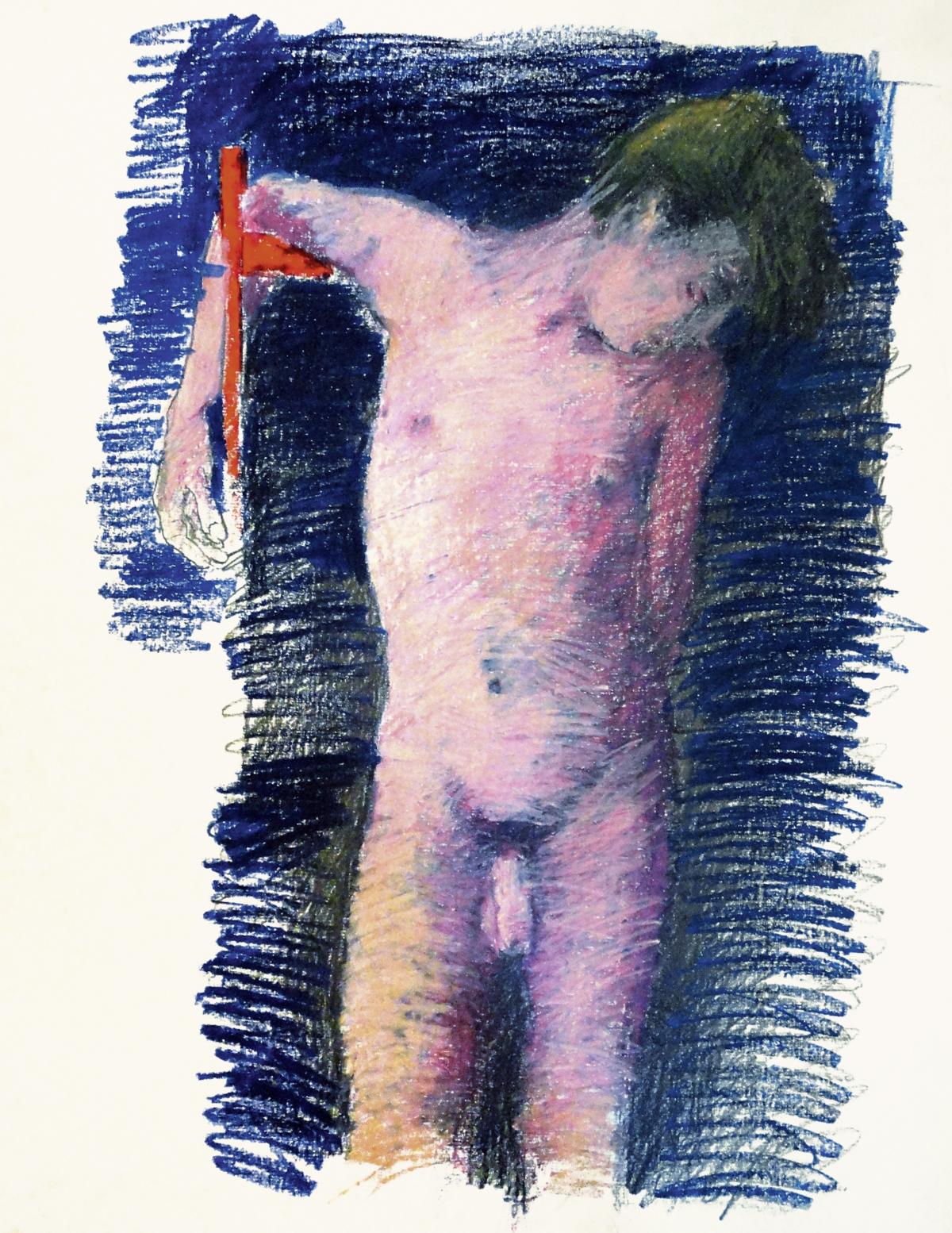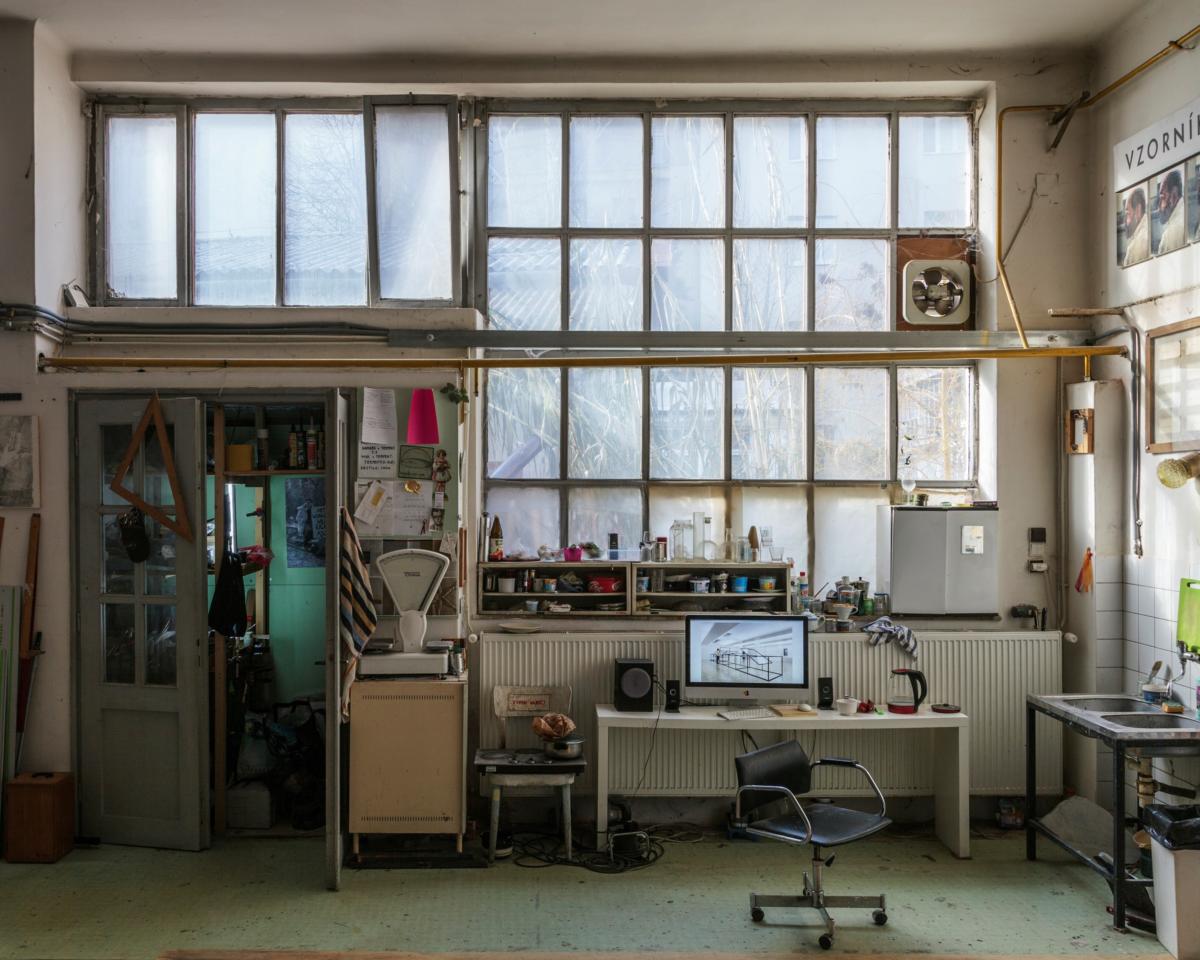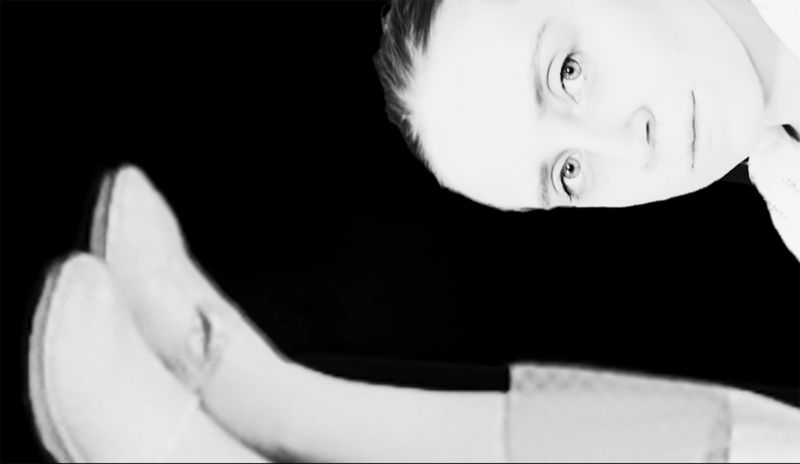
Paweł Althamer, I (am), Helsinki Art Museum, 29 March–8 September 2019, curated by Pirkko Siitari
“The title of Althamer’s exhibition I (am) epitomises the core questions of his art: Who am I? Who are we together? Collaboration is a key component of Althamer’s artistic practice . He regularly involves his family, neighbours, museum visitors, as well as disadvantaged citizens in the creation of his works. These collaborations result in sculptures – totems as Althamer calls them – that are traces of this process. The important thing for Althamer is not the end-result but sharing the creative game with the audience.”
“Several artists involved in the exhibition belong to collectives of the ones that are very often marginalized and exploited in our societies (indigenous people, people with mental disease, refugees, animals). The exhibition attempts to present what happens when these marginalized views become placed at the centre of our attention. How does their perspective differ from ours? What can we learn from them? Is there something that we will never fully understand but might get a grasp of? Is the difference between “us” and “them” as big as we tend to assume? Who decides what is at the centre and what gets pushed to the margins?.”
“The exhibition aims to narrate a fictional departure from planet earth. A last “Goodbye” before we travel into space. The question is, if we left peacefully, before the whole thing burns down, what would we leave behind as our echo? The exhibition is organised by Ivan Pérard in cooperation with Schimmel Projects – Art Centre Dresden and will present the four artists for the first time together in a show.”
Reconsider Walls, Highgallery, Warsaw, 30 March – 11 May
The show inaugurates a Highgallery’s new space in Warsaw. Participatin artists: Claire Baily, Fredrik Noren, Louis Gary, Marta Krześlak, Michael Johansson
Kayfabe, Markus Proschek and Rudolf Samohejl, SVIT Gallery, Prague, 16 March – 4 May 2019
Extra-Planetary Commitment, lítost, Prague, 16 March–28 April 2019, curated by Àngels Miralda
“We are dragged down by gravity, by the slowness of invention, by the viscosity of wet concrete. While a small organic sprout died of exposure on the moon, our home planet is increasingly filled with toxicity. Toxic air… earth… water. Imagine the protective garments needed to shield ourselves from our environment as extra-planetary conditions come to pass on planet Earth. Extra-Planetary Commitment curated by Àngels Miralda proposes a critical junction in critique and a solution through science-fiction narratives. The artists’ work with future environments as a way to analyse current earthly predicaments. This exhibition is not so much about space flight as it is about the freedom of imagination to critique current establishments and political practices as well as our contemporary daily life.”
“Born in Poland and based in London, Piotrowska has an interest in domestic spaces and man-made environments. For one series of works she asked people in Lisbon, Rio de Janeiro, Warsaw and London to build makeshift shelters in their homes and gardens, subverting childhood play.”
Hettie Judah on Joanna Piotrowska’s works in The Guardian
“Transformation, the focal theme of selected works from Collection II exhibited at the Arsenal Gallery, is understood therein in a twofold manner: on the one hand, as the systemic reforms that occurred after the fall of communism in Europe and its Asian borderlands, and on the other, as the “transition culture” as defined by the American sociologist Michael D. Kennedy, that is as the enforced and premeditated great narrative of the 1990s.”
Ondřej Vicena, 4D Carriage, Prague City Gallery, 2 April–19 May 2019, curated by Jakub Král
“Ondřej Vicena (b. 1988) is an artist with two complementary careers. In one, he works with arts and crafts, and in the other he creates works of fine art. In his installations, he goes in search of lost categories of beauty within archives of the visual garbage of recent history – trash both real and virtual. Today – in a manner reminiscent of Clement Greenberg’s famous thesis – we, too, are restoring the pluralist form of traditional categories of art through the intersection of culture with parallel expressions of high and low art, whose relationship has in the meantime been turned upside down.”
“Friend of a Friend” is a gallery–share initiative launched in 2018 with editions in Warsaw and Berlin. This year’s Warsaw edition will involve nine most-active galleries based in Poland’s capital, who will share their exhibition spaces with sixteen international gallery guests. One of the aims of the project is to create a different model for the presentation of contemporary art, to establish new networks within the Polish art scene and to enable local audiences to interact with the works of international artists, whose works were often not exhibited in Poland so far.”
Operations on Places is an exhibition presenting selected works carried out in the public space of Lublin. Urban space, the main theme of the exhibition, becomes a peculiar case-study of the modern city-palimpsest based on mapping, rewriting and overwriting of meanings, building and demolishing, interpersonal interactions, world-view exchange and economic exchange. Artists, whose works will be presented at the exhibition, work in the living tissue of the city, analyse it, form it, and contextualise it. The starting point for the works is ‘MapL’ video by Mirosław Bałka, which in an abstract way presents the map of Lublin from Majdanek concentration camp. All other works are part of this city plan, highlighting the artists’ intervention points on it. The exhibition was firstly presented at the Petach Tikva Mueseum of Art (Israel).
Hiwa K, Highly Unlikely But Not Impossible, Zachęta, Warsaw, 19. January–28 April 2019
“In the exhibition of works by Hiwa K at Zachęta one can find a number of his pivotal pieces created over the last decade. The artist, an Iraqi Kurd who found political asylum in Europe around 20 years ago, is now one of the leading contemporary artists in the world. His unique artistic tactics are based on creating the form using of the practices of everyday life, childhood memories, upbringing and family anecdotes. His oeuvre — a combination of autobiographical elements with things he overhears and fictional stories — sheds a new light on matters such as refugees, functioning in another culture, as well as the geopolitical conditions of human existence.”
Cristian Răduță, The Diamond Hunters, Nicodim Gallery, Bucharest, 2 March– 13 April, 2019
“Cristian Răduță’s animals march in droves. A Noah’s Ark of improvised genetic anomalies populate Nicodim Gallery like an emergency spawning ground, but no two are paired or exactly alike. Apelikenesses can be seen from one angle and a shuffle of animalian ciphers from the other. Răduță is their shepherd, bringing to each form a unique trembling glory. This harmonious pattern of origin stories—both raw and cooked—ludically swirl in the artist’s grand tale of a double helix. His creatures are echos of archetypes, songs from a golden record played deep in outer space.”
Geta Brătescu. The Power of the Line, Hauser & Wirth, London, 27 February–27 April 2019
“The exhibition features an important body of works from the past decade, during which time Brătescu focused predominantly on working with the line as a structuring principle. The exhibition was conceived over the last year in conjunction with the artist and in close collaboration with Marian Ivan and Diana Ursan of Ivan Gallery. For the duration of the exhibition, two film works will be screened in the centre of the gallery space giving insights into the immersive creative process of this remarkable artist.”
More: Geta Brătescu’s show review in “The Guardian”.
Slavs and Tatars, Movaland, Y Gallery, Minsk, 22 February–21 April 2019
“From February 22 to April 21, 2019, internationally-renowned art collective Slavs and Tatars presents “Mоваланд” (Movaland) at Minsk’s “Ў” gallery of contemporary art, their first solo exhibition in Belarus. The artists’ uncanny combination of humor, research, and social sculptures – investigating a region they define as “between the former Berlin wall and the Great wall of China”– has been presented at leading museums over the world. The exhibition coincides with an inaugural residency and mentorship program at the Slavs and Tatars studio in Berlin. Artists, curators, and practitioners from Belarus participate in the studio’s multiplatform practice, gaining invaluable experience and mentorship for their own individual work.”


“Inspired by postapocalyptic visions I decided to create my own prediction of fossil from the future. Looking for inspiration I became fascinated mostly about waste objects left in the landscape from which I created kind of a “maquettes” of the future. I reinterpret the landscape and deny the reality.”
Linas Jusionis, Stacks, plants and plains, Galerija Vartai, Vilnius, 7 February–15 March 2019
“Jusionis has been making his mark on the contemporary Lithuanian art scene for almost a decade now, focusing his attention more and more on the law of the ‘the eye’s desire’ often devalued in the maelstrom of contemporary intellectual trends. The title of the exhibition, “Stacks, plants and plains”, helps to create a mood close to that of a road-trip film and refers to elements of landscape, presenting them as recurring motifs in the artist’s work.”
Jan Simon, Synthetic Folklore, U-jazdowski, Warsaw, 22 February–19 May 2019
“In 2015, Janek Simon fabricated at home a 3-D printed retrospective of his work with many abstract patterns, which organized his many interests and passions: from globalization and political geography, through artificial intelligence, financial speculations, DIY strategies, postcolonial theories, to the most recent one: synthetic folklore. Like that relief, this exhibition maps and decodes the last fifteen years of the artist’s work”.
Daniel Rycharski, Fears, The Museum of Modern Art in Warsaw, 15 February–22 April
“Rycharski’s bold approach to faith and Christianity, which has no equivalent in Polish art, is currently the driving force of his artistic practice. The pieces brought together for the purposes of the exhibition tell the story of an artist who has shifted from a desire to organise a grass-roots revolution and achieve equal rights for LGBT+ individuals within the Church to the determination to practice his faith according to his own rules. Grounded in religion by way of various institutions and family members, he takes a given set of concepts and values and pursues a new version of a liberation project that would embrace outcasts. It is a project he calls ‘Christianity without religion’.
Krzysztof Jung, Drawings, Schwules Museum, Berlin 16 March–1 July 2019, curated by Wolfgang Theis
“The focus of our exhibition is Krzysztof Jung’s Sebastian series, inspired by Derek Jarman’s 1976 film. Saint Sebastian preoccupied Jung from the mid-1970s into the 1990s. Like Jarman, he was captivated by the male nude, by submission to pain. Jung’s drawings range from the most refined pencil hatching to feverish oil pastels, tender rose watercolours and precise ballpoint. But in his variations the surrender to death comes about without a single arrowhead. Death is passed over, invisible. As the human immunodeficiency virus raged in the West, first and foremost among gay men, the Iron Curtain shielded Polish homosexuals from it. We are left to wonder whether AIDS played a role in Jung’s Sebastian works. The only obvious connection is their contemporaneousness”.
bauhaus imaginista, Haus der Kulturen der Welt, Berlin, 15 March–10 June 2019
“The title bauhaus imaginista hints at the imaginative possibilities which were opened up by the Bauhaus, and the multilayered interpretations that the term still denotes today. Between archival findings and contemporary contributions, the project translates the historical perspective into a set of contemporary questions: How, in the spirit of the Bauhaus, might culture be reimagined as a social project today? What kinds of institutions would such a project need? And in what ways does the Bauhaus still stimulate visionary practices and discourses today?”
Starting Point. Six Contemporary Artists, Mo Museum, Vilnius, 8 March–14 April
„Works of six contemporary artists in the show of the Small Hall tell individual stories. Schlagbaum (English: Boom Barrier) by A. Polukord creates an obstacle for a passer-by, the vision of Vilnius city by L. Parulskis is unveiled in a fast food café, whereas the photographs of G. M. Kinčinaitytė invite you to wander between the canyons of Mars and Earth. Special interactive objects have been created for each artwork. After touching, lifting or activating them in different ways, the visitor will hear the artists’ stories about the starting points in their creative processes.”
“The exhibition covers a wide range of topics and artistic practices. The works on show are representative of the working methods of the artists and reflect current debates in the art field. They stand out due to their critical view of the present and make use of various strategies regarding aesthetic choices, art media and topics. In paintings, sculptures, videos, sound pieces, installations and lecture performances, there is an examination of, for example, architecture, and of specific places and collective experiences; research-based projects are developed, music and materialities are tested, and social conditions and various aesthetic uses of form are depicted. Furthermore, in the presented works historical references are made usable for the present and artistic and transformative processes are reflected.”
Gordon Matta-Clark: Anarchitect. Anu Vahtra: Completion through removal, Kumu Art Museum, Tallinn, 22 February–8 June
“At the Kumu exhibition, Vahtra has conceived an installational environment for Matta-Clark’s works based on the design of the preceding exhibition in the Great Hall, Wild Souls. In the Kumu courtyard, Anu Vahtra has created an installation that recalls the former limestone quarry at the site of the museum and enters into a dialogue with Matta-Clark’s work.”
Rasheed Areen, A Retrospective, Garage Gallery, Moscow, 8 March–26 May 2019
“This spring, Garage Museum of Contemporary Art presents the first solo exhibition in Russia of Rasheed Araeen (b. 1935, Karachi, Pakistan), presenting six decades of work by the seminal practitioner who has had a profound influence on generations of artists, writers, and thinkers around the world. Known for his strident critique of the ideological and political assumptions of Western modernism, Araeen trained as an engineer in Karachi, before moving to London in 1964 in pursuit of an artistic career. There, he first became known as a pioneering sculptor and installation artist in the (then) emerging field of minimalism, receiving the prestigious John Moores Prize for sculpture in 1969.”
Post Winter Mixtape, Temnikova & Kasela Gallery, Tallinn, 28. February–27 April 2019
“Announcing the end of winter, the group show at Temnikova and Kasela Gallery will set together works by Helena Keskküla, Anna Mari Liivrand, Inga Meldere (Latvia), Ann Pajuväli, Jaanus Samma and Sigrid Viir. An imaginary journey of still and moving images will be presented to the viewer. The exhibition has corners, corners soft and hard. Piled up compositions, scrambled everyday rhythms. Chairs, tables, shelves. Form the mixture into a manageable dough! Work area, kitchen area, shelves. Pastel-covered offices. The Universe is not turquoise – it’s beige. Beige!”
Olga Micińska , The Shaving Horse & Co., Polana Institute, Warsaw, 5–16 April 2019
“The works of Olga Micińska, exhibited in a private apartment, refer to intimate space (bed, bedclothes, underwear) or to craft and physical work (shaving horse, wedges, tools). The installation functions as a vast still life – a system of everyday objects with symbolic meanings. The ecosystem proposed by the artist is based on craftsmanship as a method and philosophy, postulating resistance towards the neoliberal logic of the market. This method favours direct contact with the material, attention to detail, and slow working process”.
Viktor Dedek: The Place of Family, The National Gallery in Prague, 1 March–28 July 2019
“Full-time dreamer and part-time trickster, Viktor Dedek is a quixotic regisseur of polyphonic worlds, suspended between the unlimited fantasy of a computer game and the unruled laws of imagination. The artist boldly reaches beyond the performative, towards the multi-sensorial experience of extended reality. Fictive narratives of phantom-like protagonists collide with the visual collages of phantasmagoric sites, loosely based upon a deceiving memory, non-identified cartographies of a lost mind. Dedek’s universe is both a utopia of the unknown as well as the comfort zone of the artist’s own self-confidence.”


Temporary Structures 5, PLATO, Ostrava, 6 March–24 April 2019
“Temporary Structures is PLATO’s year-long project when the city gallery’s backup facilities in the former Bauhaus are created by artists. Instead of traditional exhibitions we present a library, a bistro, a shop, a cinema and a garden as works of art. An area of almost 5000 m2 in an empty hobby-market to be used temporarily as a gallery. These initial conditions provoked us to make an experiment in collaboration with artists. Instead of traditional exhibitions we present the gallery’s essential backup facilities, which can be used for at least a few years, until PLATO finally moves to its permanent location in the reconstructed city slaughterhouse. The support facilities built by artists directly for the PLATO gallery have been expanded by a cinema designed by the Polish artist Zuza Golińska, visitors’ facilities by the French artist Stéphanie Lagarde and a third presentation structure – display created by the Czech artist Zbyněk Baladrán. The exhibition is the fifth in the Temporary Structures cycle that will close in April 2019.”
Magda Csutak, Null und Etwas, Christine Konig, Vienna, 7 March–20 April 2019
“Magda Csutak’s artistic production and series of works are constructed interactively. In the process, constitutive factors remain the sensuous desire to try to experiment, and the translation of mathematics into language via the path of visual art. Her work is frequently visionary, ahead of the actual scientific proof of theories. As early as 2002, for example, she created a 15-part pictorial formula that delineates her cosmos. In 2006 and 2007 she attended the lectures of the mathematician Rudolf Taschner in Vienna. There she discovered, in the lectures relating to Euler, the “most beautiful of all mathematical formulas”. This is a metaphor that not only Taschner draws on, but one which also touches on a central nerve in Magda Csutak’s work. She constructs her artistic binary system in which elements convene which otherwise remain separate.”
Inviting. Sarkis-Kantor, Cricoteka, Cracow, 15 March–11 August 2019
“At the Inviting exhibition, everyone — including its protagonists, Sarkis and Kantor — is a long-awaited guest. Both in a literal and metaphorical sense, invitation is the leading idea of the project. Cricoteka invited Sarkis, who in turn invited Tadeusz Kantor to take part in his exhibition. Other gestures follow: all those willing to visit Inviting and to participate in the performative actions that constitute a significant element of Sarkis’ show are more than welcome”.
“Collaborative and trans-disciplinary artist Antje Majewski (born 1968 in Marl, Germany) has opened an ongoing dialogue with colleagues from Brazil, Cameroon, China, Colombia, France, Hungary, Poland, and Senegal, and invited them to contribute works exploring the reciprocal relationships between human and beyond-human beings in a poetic way. The exhibition at Hamburger Bahnhof – Museum für Gegenwart – Berlin stems from this conversation between the participating artists and their interactions with others.”
“This site-specific installation by František Demeter, a Slovak artist from the middle generation, is an expansion of the medium of painting into space. The artist takes the existing space of the gallery as the point of departure for a spatial structure generating new relationships between painting and space and activating the viewer who enters the work. The liberation of painting from a frame on the wall, accentuation of the material nature of the medium and a focus on its technical aspects stimulate Demeter to permanently revise and deconstruct the medium of painting and to question its position in the contemporary world. In the year 2000 František Demeter (b. 1975) completed his studies in the studio of painting at the Academy of Fine Arts and Design in Bratislava. In 2015 he was a finalist in the Oskar Čepán Award”.
Emőke Vargová: E:V:, Futura Gallery, Prague, 5 Mar–28 Apr 2019
“Exhibition is an incomplete insight into the 25 years of Slovak artist’s (1965, Dunajská Streda) portfolio. Vargova’s works, typical for their un-focusable compositions, uses the simplest and cheapest materials and techniques creating a complex two dimensional but unavoidably sculptural forms.”
“The exhibition ‘my gallery is an idea’ reconstructs the history of Galeria Adres, the independent artistic institution run by Ewa Partum between 1972 and 1977 in Łódź. Galeria Adres collaborated with Krzysztof Wodiczko, Zbigniew Warpechowski, Dick Higgins, Richard Kostelanetz, Jochen Gerz, Endre Tót, Ben Vautier, Eric Andersen, among other artists. It formed part of an international artistic network that ran across the cold war East-West division and functioned beyond official communication channels. Materials gathered in the Archive of Galeria Adres is presented in its entirety for the first time since 1977. The exhibition also features Ewa Partum’s works from the collection of Galeria Studio in Warsaw and the artist’s intervention, created specifically for this occasion, which refers to the International Film Festival organised by Galeria Adres in 1977.
MONUMENT. Central and Eastern Europe 1918–2018, Królikarnia, Warsaw, 16 December 2018–10 Apirl 2019
“Monuments create the landscape of our values which is why they so often evoke controversies. They commemorate statesmen, heroes, and victims of wars. They represent the commonly shared ideals, “inhabit” cities and dominate the view. For those in power, they are a tool in constructing collective identity. As borders shift and political regimes change, the monuments of the past era are torn down, recycled and renamed”.
A Woman Looking at Men Looking at Women, Muzeum Susch, 2 January–30 June 2019
“Susch, Switzerland — It’s hard these days to stand out as a new museum. One way is to build a cultural outpost in a pristine natural environment, creating a unique synergy by appealing to tourists eager to experience both culture and nature. Another way is to add unique architectural features — like a bat cave that doubles as an exhibition space, for example. Welcome to Muzeum Susch, the newest in a long line of private museums that are becoming increasingly more prevalent the world over. But what’s at stake with the recent upsurge of private museums? That’s a question I endeavored to answer on a recent visit to the newly-constructed Muzeum Susch in Switzerland.”
Dorian Batycka on Muzeum Susch in Hyperallergic: https://hyperallergic.com/484415/why-a-polish-billionaire-built-a-museum-in-the-swiss-alps/
Imprint
| Index |


